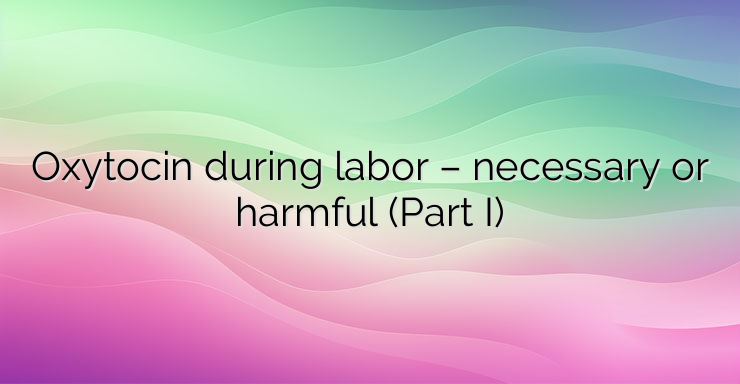Oxytocin is a hormone that is secreted from the paraventricular nucleus in the hypothalamus, and from there it is stored in the posterior lobe of the pituitary gland, from where it is released to perform its functions in the body. One of its main functions is to stimulate the rhythmic contraction of the smooth muscle tissue of the uterus during labor. The main factor for increasing the secretion of this hormone is the beginning of the expansion of the cervix. During the birth itself, synthetic oxytocin is often administered, which is administered intravenously or by intramuscular injection in order to stimulate labor. The need to inject synthetic oxytocin during childbirth is determined by the doctor who leads the delivery. The hormone oxytocin directly affects the smooth muscles of the uterus, increasing the strength and duration of contractions. As the cervix dilates, the sensitivity to the hormone increases. The action of the hormone continues after birth, helping the uterus to recover and provoking lactation. A condition for applying synthetic oxytocin to stimulate labor is the “readiness” of the cervix – its muscles must be sufficiently elastic. The action of oxytocin is effective when the cervix is at least 6 centimeters dilated. The second important condition for applying the medication is the independent (uncaused) rupture of the amniotic membrane. The dosage of the preparation must necessarily be in accordance with the general condition of the mother and the fetal response. Curious: A number of scientific studies prove that oxytocin is extremely important for the social behavior of people. In women, the hormone is responsible for the mother-child bond, and in men, it is related to their ability to share. Oxytocin also plays an important role in our feelings of pleasure and our behavior. In which cases is the administration of oxytocin imperative? Oxytocin is administered to stimulate active labor in the event that the first stage of labor is prolonged and no rhythmic periodicity of labor has been established. uterine contractions. Oxytocin is administered in cases where there is leakage of the amniotic fluid and 4 hours later the start of active labor is not considered. Oxytocin is also administered when labor has begun, when there is no dilation of the cervix or it is less than a centimeter – a centimeter and a half in one hour. An oxytocin system may be administered if contractions weaken or even disappear. Second part of the material


Leave a Reply